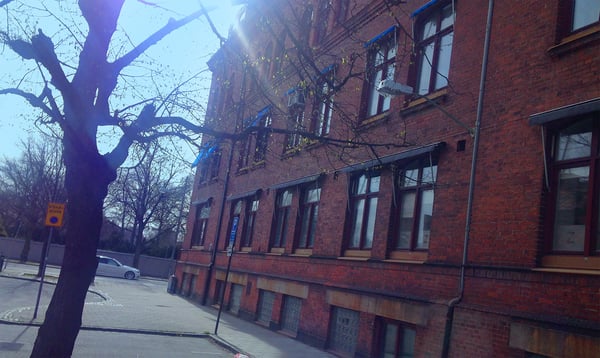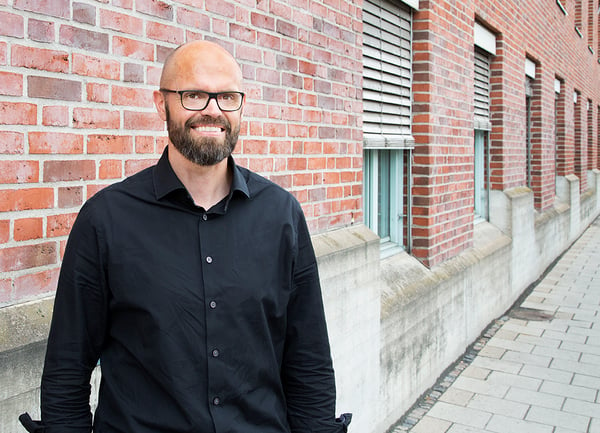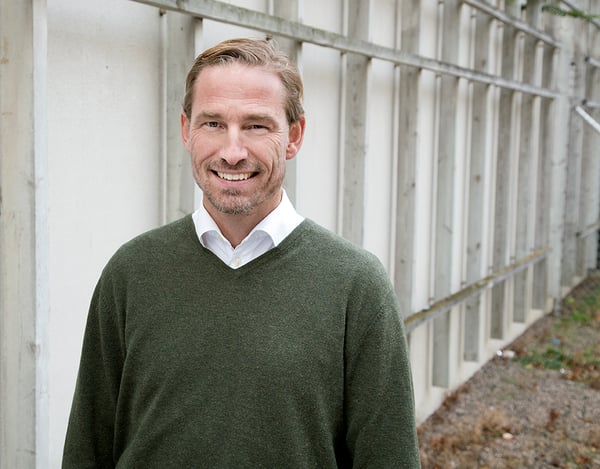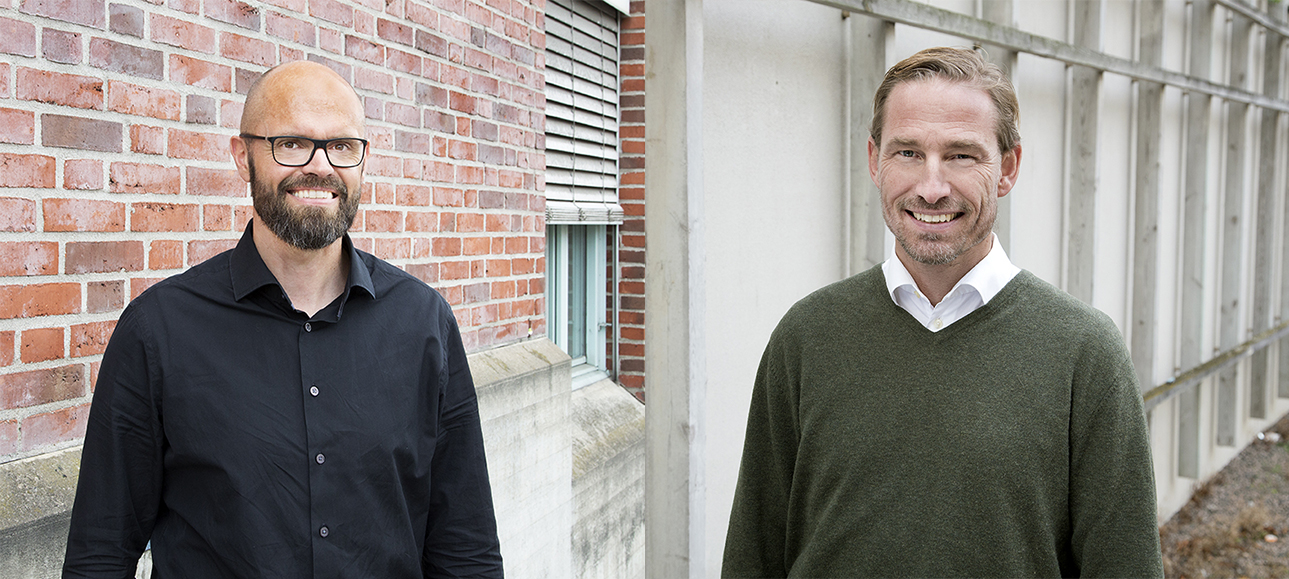[Interview] Zenit Design | What is required of an agency in service design
*In Japanese is noted in this page.
Hello, this is Service Design Esben from Infobahn in Kyoto here. Last year I attended the Service Design Global Conference (SDGC)(*1) in Amsterdam with Design Director Kazumasa and , where we were representing one of a few Japanese companies attending (https://www.infobahn.co.jp/ib_column/7104). As many of you might know, the conference experience is about more than just talks, presentations and workshops. The value generated is just as much about meeting interesting people, and making valuable connections that otherwise would have been impossible. In Amsterdam we made just such a connection with Zenit Design from Sweden, and after we came back to Japan, we sat down with Zenit Design CEO Jonas Svennberg and Business Developer Mats Huss over Skype, to continue the discussion we started at the conference. What follows is the conversation we had on Skype about moving into service design as a design agency.
*1: The Service Design Global Conference is organised by the Service Design Network (https://www.service-design-network.org) and is the biggest annual gathering in the service design community. Over the span of 2 days, more than 600 people attend this paid conference to share cases, methods and theories on the practice of service design.
 Zenit Design: Established in 1994 by 4 industrial designers, Zenit Design is now a design studio with more than 30 people working across difference genres to help turn a client’s vision into value for their customers.
Zenit Design: Established in 1994 by 4 industrial designers, Zenit Design is now a design studio with more than 30 people working across difference genres to help turn a client’s vision into value for their customers.
 Jonas Svennberg, CEO, Zenit Design (https://www.linkedin.com/in/jonas-svennberg-9918428/) , MFA Industrial Design, working at Zenit Design since 2001.
Jonas Svennberg, CEO, Zenit Design (https://www.linkedin.com/in/jonas-svennberg-9918428/) , MFA Industrial Design, working at Zenit Design since 2001.
 Mats Huss, Business Developer, Zenit Design (https://www.linkedin.com/in/mats-huss-b366a21/) , B.Sc. Media & Communications, working at Zenit Design since 2016.
Mats Huss, Business Developer, Zenit Design (https://www.linkedin.com/in/mats-huss-b366a21/) , B.Sc. Media & Communications, working at Zenit Design since 2016.
Service Design
Esben: Hi guys, thank you so much for taking your time to talk with us again today. Would you first briefly introduce yourselves?
Jonas: I’m Jonas, CEO at Zenit.
Mats: And I’m Mats, business developer at Zenit.
Jonas: It is only within the last 3-4 years that we have begun working with service design – we still do a lot of product design. We are still in the learning stage.
Kazumasa: So are we! (laughs)
When exactly did you start Zenit Design?
Jonas: We started in 1994 and we are working with 37 people. The company was started by 4 industrial designers, 3 of whom are still working in the company. A couple of years ago I then switched hats with one of them, and we are now becoming a more mature company fit for continued growth.
Pivoting from Products to Services, Media to Service Design
Esben: I think this interview could be very interesting, because you are pivoting from products to services, and we are in a sense expanding from media to service design – although not our entire company, of course. So we have a lot to learn from each other, and we would particularly love to hear about your experiences of building capability and how you’re dealing with client projects of course.
 Zenit Design
Zenit Design
Jonas: Yes, it’s interesting that our two companies together are providing an image of how the overall business is working. Either you come from the media content side, or you come from product design or more traditional design process like us.
And we have been struggling, because not everyone initially bought into the idea of service design. They were worried about how to sell it, and how it would fit with the current capabilities of the company. But the interesting thing was that we when looked back, we realized that many of our previous projects had been service design-oriented. We just didn’t realize at the time.
What was interesting for us to attend the conference was, how do we continue our growth in the service design industry, while still being trustworthy? We have so much experience in developing physical products, and know how to advertise and sell that expertise. But how do we talk about offering service design in a way that makes sense to our existing and future clients? And what do we need as an organization? Just like you at Infobahn are doing, making specific UX and service design hires, we need new people who do not have an industrial design background, to help us branch out.
It’s really not about having the right title, but about who can make the customer’s customer have a nice journey.
Mats: I also attended the Service Design Global Conference last year in New York, and I think it’s very good that the conversation is not revolving around what kind of design people are doing anymore. It is rather about a process of facilitating a nice experience for the client. In that regard it was very interesting that one of the Service Design Award winners was an advertising agency – it’s really not about having the right title, but about who can make the customer’s customer have a nice journey.
I have seen a lot of digital agencies competing against industrial design agencies for the same client, because it all comes down to who can deliver a good experience and trust in the process.
It’s really exciting, actually, because it disrupts the market and allows more equal access to clients. It means that we can begin a conversation with the client around what their challenges are. We don’t talk about what kind of design to do, but rather about the concept of their business model. And then we see what we can improve or develop from there.
In fact it becomes a strength not to have a one-sided focus. I visited a client recently who only works in digital, and they were impressed that we had mechanical engineers on our team. They were dissatisfied with pure service design agencies because the way they talk can often become too “fluffy” or intangible. Having CAD specialists on our team was trustworthy, in a sense, and it is something we will bring in to the conversation in the future as well.
Jonas: I can imagine you are experiencing something like that in the journey you’re in. Going to service design from a media base.
We are helping clients shaping their brand and developing their brand, but mostly on the basis of a product design project beforehand.
We need to have some stickiness, or tangibility in relation to how we talk about services
Mats: In relation to this, one other thing we realized in Amsterdam was that we need to have some stickiness, or tangibility in relation to how we talk about services so it’s easier to relate to them. Many digital agencies have an agenda that is too focused on the digital, and forget to make the services relevant to the users.
In other sectors like music and photography, you see some resurgence of analog technologies, as a kind of reaction to the over-digitization of our lives. So if you want to succeed you have to be smart about making a mix of digital and analog available to solve user needs.
Esben: In that regard, you said before that you had done some service design before. What elements did you see in the previous projects that made you realize that you were doing services?
We delivered an impact, but were not aware of service design as a concept.
Jonas: It comes down to business innovation. There is a major company within milk processing. They make separators of liquids. They came to us with a prototype. It was working, but was not as good as it could be. They were selling it, but wanted to improve it to appeal to more markets. We made a new enclosure and a new user interface, so it was much easier to learn and to use. But one might argue that we made an even bigger impact through the conversations we had about their business model, and how they might market their machines by leasing them rather than selling them. Basically servitising their offering.
We delivered an impact, but were not aware of service design as a concept.
Esben: That is a very good story. And one of the cases that are rarely showcased because it’s not as sexy as the standard service examples likes Uber and AirBnb.
It’s also particularly interesting to the Japanese market, because it is traditionally a manufacturing economy with major companies looking to switch up their business models to avoid a race to the bottom.
 Zenit Design
Zenit Design
One problem that agencies are facing is the divide between the traditional quantitative focus of business-educated people, and the contemporary qualitative research focus of design-educated people.
***** Jonas: I think it’s interesting to discuss expectations of clients. We see a growing demand from existing clients who want help with business model transformation, servitization and added value to existing offerings. How do you do? You have a salesforce already selling media-offerings to existing clients, but to what extent do you manage to sell service design to existing clients? And to what extent do you need to make entirely new ones?
Esben: It’s hard to sell to existing clients. Not least because we are also working within our own organization to build design literacy, and make a unified push for new kinds of assignments.
Kazumasa: Basically clients ask us to create something. And our approach so far has then been to tell them that we can enhance the planning phase through ethnographic research. Little by little we are then building a portfolio of new projects.
Jonas: We experience that too. Clients come with a certain product in mind and tell us to make it. We then ask how much freedom we have, and well, it’s not that much. So it’s basically styling. But that is not research-driven design, and it’s not where the most potential value is.
Mats: When we talk to clients, we try to ask, “What challenges do you have?” Is it mainly about reaching new segments, connecting better with existing segments or would they like to expand their stakeholder map? Once we get the conversation to this problem space where we can open up the playing field, that’s when it gets interesting.
Jonas: The problem is that if you talk to a software manager, he will want to have the newest version of a software, while an R&D manager would want something different. So bridging this kind of thinking to consider what is best for the company is quite a challenge. In order to avoid uncertainty, you are brought in to work on something they already have in mind, instead of tapping into the real power of questioning.
Mats: One problem that agencies are facing, that also came up at the conference is the divide between the traditional quantitative focus of business-educated people, and the contemporary qualitative research focus of design-educated people.
Jonas: Yes, we have to somehow bridge the gap by putting some effort into visualizing research findings, and translate them into the language, if you will, of quantitatively oriented people. We have to be able to enable our clients to go into a board meeting and say, this week this-and-this design project resulted or will result in so-and-so; a tangible outcome.
Mats: The difficult thing is basically to give them a sense of the outcome before the process is done or has even begun.
Service design is less about ending up with a shiny, final solution and more about integrating large groups of the client teams in the process
Jonas: We can come in and say that it’s a very interesting project, and we have made so-and-so new findings, but we can’t tell you where it leads yet. And that’s a challenge. You have to understand their needs. You can think of them as users, in a sense, not of the final solution perhaps, but of the design process. You need to be humble about the fact that they have expectations to live up to up within their own organizations.
It’s a problem about story-telling. Being able to show progress, without limiting the process. Because if you show one thing to the board, you can’t approach that same board and show something completely different – even if you maybe should, based on research findings.
I think that service design is less about ending up with a shiny, final solution and more about integrating large groups of the client teams in the process. To me that is sometimes the strongest win. I think this might be even harder in Japan with the corporate structures there, but if you could get in that position, I think it’s very valuable for making big leaps ahead for both your clients and their clients.
Human Resources
Kazumasa: What kind of people are you looking for?
Jonas: What we need to add is strict service design skills, because we already have a lot of experience around product design. We also need to strengthen our interaction design team. At this point we are working with a lot of external partners, but going forward I believe we will internalize those capabilities at some point.
Mats: Yes. But I think it’s also important to get people from other parts of the world, who can bring an outside perspective and help us collaborate closer with international clients in Asia, the Americas and the Middle East.
Kazumasa: What are you looking for in service designers in particular?
Jonas: We don’t look for the deepest experts, but rather for people who can create an energetic atmosphere, not only within our team, but among the client team as well. Sometimes you need a specialist who can focus on the specific of course, but in general we are the ones who set the scene for collaboration.
Mats: And we need empathetic people, who are sensitive to the cultural context and can read between the lines during an interview for example.
Esben: Thank you! I just have one final question here in the end: if you were coming to Japan, what would you be most excited about to experience here?
Mats: I would love to experience how well organized the society actually is, with so many people living in such a relatively small space.
Jonas: I would of course enjoy the vastness of the cities, but also take the opportunity to go deep into the mountains and experience the craft and beauty of old Japan as well.
